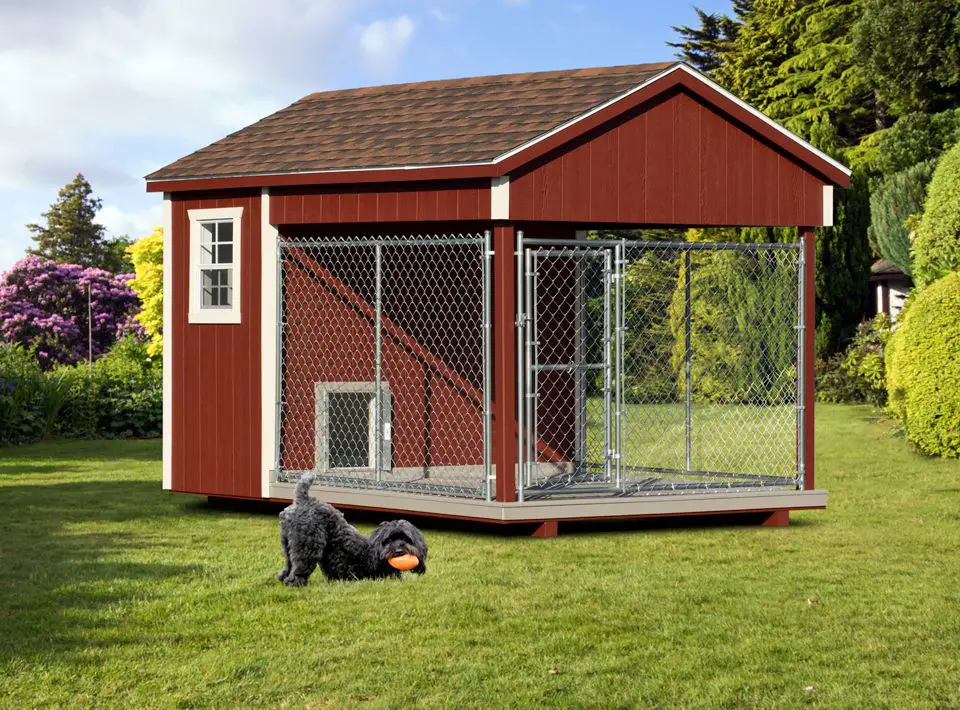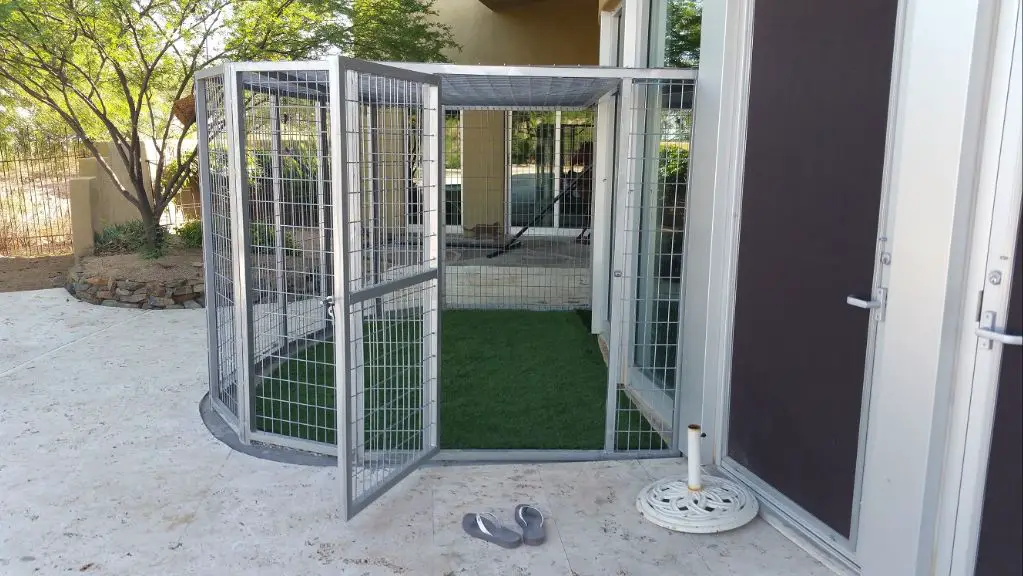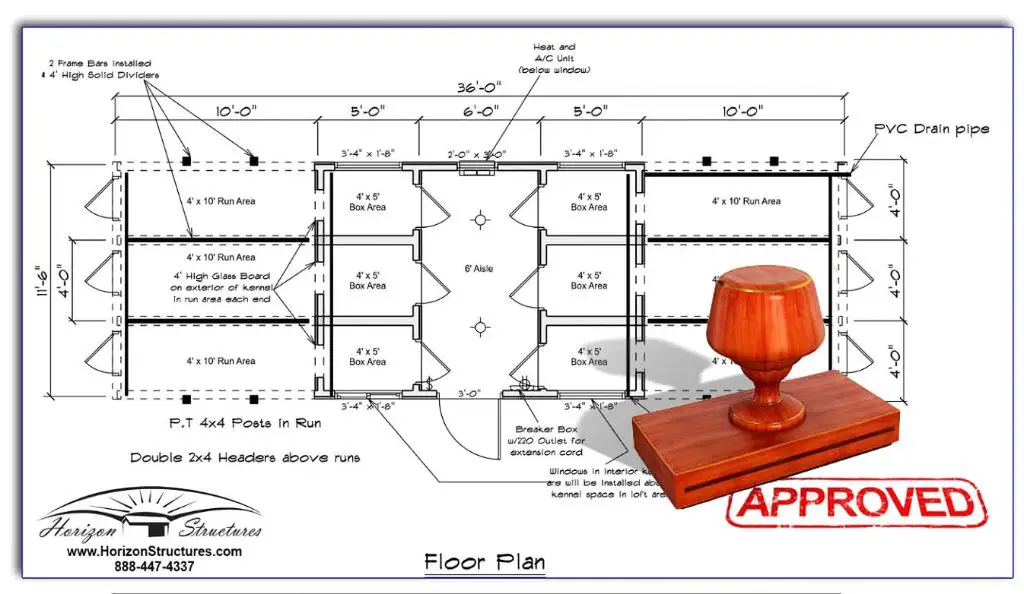Introduction
Kennels are facilities that provide housing for dogs. They serve important functions such as boarding, breeding, training, and sheltering dogs. This article will provide an overview of the different types of kennels, typical kennel facilities, kennel management, safety considerations, and regulations. The goal is to educate readers on what kennels are, their purpose, and key things to know about them.
Definition of a Kennel
A kennel is a structure or shelter where multiple dogs are housed. According to the Ohio Revised Code Section 955.02, a kennel is defined as “any establishment, commercial or otherwise, where dogs are bred, raised, trained, or boarded.” The key characteristics of a kennel include:
- Housing for multiple dogs, often with separate spaces, crates, or runs for each dog
- Enclosed areas allowing dogs to eat, sleep, play, and eliminate
- Facilities for feeding, grooming, training, and caring for the dogs
- Oversight by kennel staff responsible for the dogs’ health and welfare
Kennels provide controlled spaces tailored to canine needs and behaviors. They enable proper feeding, sanitation, climate control, veterinary care, exercise, socialization, and enrichment for multiple dogs. Kennels may be operated commercially as a business or non-commercially by breeders, trainers, competitors, humane societies, or pet owners with several dogs.
Types of Kennels
There are several main types of kennels that serve different purposes:
Boarding Kennels
Boarding kennels provide temporary accommodation for dogs when their owners need someone to care for them. They offer services like daily exercise, grooming, and veterinary supervision. Boarding kennels keep dogs in individual enclosures or runs while the owners are away at work, on vacation, etc. Some kennels offer upgraded services like webcams, TVs, and premium food options.
According to Petco, boarding kennels often have both indoor and outdoor areas so dogs can play and relieve themselves [1].
Breeder Kennels
Breeder kennels are maintained by dog breeders and used for housing breeding stock dogs. They keep the dogs in optimal conditions for health, socialization, and mating. The kennels allow breeders to monitor each dog closely and control their diets and activity. They may house puppies until they are old enough for adoption.
Veterinary Kennels
Veterinary kennels provide temporary accommodation for animals staying at a veterinary hospital or clinic. Dogs may be kept there while recovering from surgery, during an extended course of treatment, or when they are contagious and need to be isolated.
Municipal Kennels
Municipal or public kennels are operated by local governments to house lost, abandoned, or stray dogs. Strays are kept for a mandated holding period so owners can reclaim them. If unclaimed, the dogs may be made available for adoption or euthanized. Municipal kennels focus on housing dogs rather than boarding or breeding them.
Kennel Facilities
Kennel facilities can vary greatly in size and design depending on their purpose, but most include some key components. According to Buildings Guide, common features in kennel facilities include:
- Indoor kennel runs with indoor/outdoor access.
- Outdoor runs and play areas.
- Isolation areas for sick dogs.
- Group playrooms for socialization.
- Grooming rooms.
- Areas for food preparation and storage.

Kennel runs often have raised floors for easy cleaning and drainage. Floors and walls are usually sealed for maximum sanitation. Some facilities may also have climate controls, soundproofing, and security features. According to research by Cobb, kennel operators rank outdoor areas for exercise and socialization as one of the most important design elements (source). Overall, facilities aim to provide a safe, sanitary, and enriching environment tailored to dogs’ needs.
Kennel Management
Running a kennel requires extensive management to ensure operations run smoothly on a daily basis. This includes coordinating feeding schedules, cleaning routines, veterinary visits, and employee training. According to AtoZ Veterinary Supply, kennel management tasks involve creating schedules for when dogs are fed, let outside, and cleaned up after.
The kennel manager is responsible for making sure all dogs are fed properly and on time. Feeding times are often scheduled 2-3 times per day. Cleaning tasks involve disinfecting kennels, play areas, and equipment regularly. Kennels should be cleaned multiple times per day, especially before new dogs enter kennels. Managers must also coordinate regular veterinary visits for exams, vaccines, and preventative care.
According to Interview Prep, another critical part of kennel management is proper training of employees. Kennel managers should provide training on safety procedures, cleaning protocols, dog handling skills, and customer service. Well-trained staff are essential for smooth kennel operations and excellent care of dogs boarded at the facility.
Kennel Environment
The kennel environment plays a critical role in maintaining canine health and wellbeing. Proper ventilation, temperature control, lighting, and noise management are essential elements of a healthy kennel environment.
Ventilation systems like fans, open windows or air conditioning helpcirculate fresh air and prevent the buildup of odors, allergens, and germs that can irritate a dog’s respiratory system. Temperature control through heating and cooling maintains comfortable conditions and prevents heat stroke or hypothermia. Proper lighting like daylight balanced LEDs mimics natural patterns and avoids eyestrain. Controlling noise levels blocks stress-inducing sounds that can elevate heart rate and blood pressure.
Other considerations include drainage systems that quickly eliminate liquids and prevent slippery, unsafe or unsanitary conditions. Overall, optimizing the kennel environment provides dogs a healthy, low-stress setting that meets their physical and psychological needs.
Boarding Services
Kennels typically offer various boarding services to accommodate pet owners. Some common boarding services include:
Grooming – Many kennels provide grooming services like bathing, nail trimming, haircuts, and flea treatments. This keeps dogs clean and well-groomed during their stay (Country Kennel: Dog Boarding, Daycare, Grooming, Training …).

Training – Some kennels offer obedience training or refresher courses while dogs are boarded to reinforce good behaviors (How Much Does Dog Boarding Cost?).
Play Time – Reputable kennels will ensure dogs get adequate outdoor play time and exercise each day with toys, walks, or playgroups.
Pickup/Drop Off – Many kennels provide the convenience of pickup and drop off services to transport dogs to and from the owners’ homes.
The availability and cost of services varies between kennels. Additional services beyond basic boarding tend to increase the nightly rates. However, these amenities help ensure dogs are happy, healthy, and stimulated while their owners are away.
Kennel Safety
Proper safety protocols and procedures are crucial for any facility housing and caring for dogs. Some key considerations for kennel safety include:
Secure enclosures – Kennels should have sturdy walls and secure latches to prevent dogs from escaping. Chain link and welded wire are common fencing materials. Per the AKC, fencing should be at least 6 feet tall for large breeds. Gates should swing inward and have double latches to prevent accidental opening.[1]

Supervision – Dogs should never be left unattended in outdoor kennels. Kennel staff should monitor dogs regularly to watch for signs of distress, aggression, or injury. Dogs should be separated if they display antagonistic behaviors.[2]
Emergency planning – Kennels should have emergency action plans for disasters like fires, floods, storms and power outages. Plans may include evacuation protocols, secondary shelters, supplies, contacting owners, and verifying all dogs are accounted for.[1]
Adequate ventilation – Proper air circulation, climate control, and shade are essential in kennel buildings. Excessive heat, humidity, and poor air quality create health risks.
Sanitation – Regular cleaning and disinfection helps control germs and parasites. Kennels should be free of standing water, waste, and debris.
Secure exterior – Kennel facilities should have secure perimeter fencing and gates. This prevents loose dogs and unauthorized entry.
Safety equipment – Fire extinguishers, first aid kits, back-up generators, and other safety gear should be readily available in case of emergencies.
Following proper protocols and training kennel staff helps keep dogs healthy, comfortable, and secure in their care.
Kennel Regulations
Kennels must follow certain laws and regulations related to licensing, inspections, and animal welfare standards. In most states, kennels must obtain a license or permit from the local animal control agency or state department of agriculture to legally operate. For example, in Texas all kennels must register with the Texas Department of Licensing and Regulation and adhere to their kennel regulations (source).
Kennel facilities are subject to routine inspections by regulatory agencies to ensure they meet minimum housing, sanitation, ventilation, and animal care standards. Kennels that board dogs are typically required to be staffed at all times to monitor animals, provide daily exercise, and maintain clean living spaces (source). There are often regulations dictating the minimum enclosure size per dog, requiring regular veterinary care, and prohibiting overcrowding.

Most states mandate that kennels follow basic animal welfare practices in regards to feeding, socialization, veterinary care and more. Negligence or abuse can result in fines, revoked licensing, or criminal prosecution. While regulations vary by location, kennels must adhere to local and state ordinances to legally and ethically operate their business.
Conclusion
In conclusion, kennels play an essential role in providing safe and comfortable temporary housing for dogs. As we’ve explored, kennels come in various types like boarding kennels, breeder kennels, and rescue kennels, each catering to specific needs. They offer facilities like indoor/outdoor runs, climate control, grooming, veterinary care and more to ensure dogs’ wellbeing. Kennel staff are trained in areas like cleaning, feeding, exercise, health monitoring and behavioral management. Laws and regulations govern aspects of kennel operations to uphold standards. While no kennel can perfectly replicate a home environment, reputable facilities aim to reduce stress and give dogs as normal a routine as possible. For many pet owners, kennels provide invaluable and trusted services.